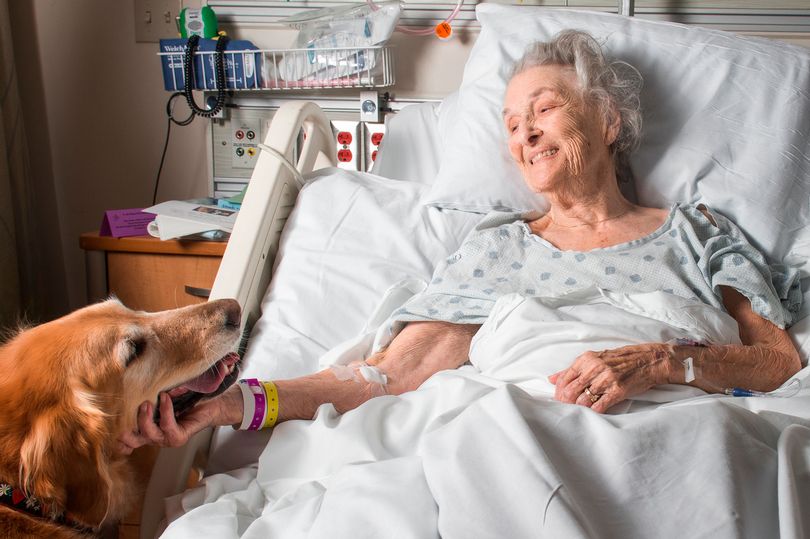However, experts say hygiene and infection control must be the priority and the Royal College of Nursing has published a “pet protocol” for dogs in healthcare settings, welcomed by the British Veterinary Association.
Among other things, it wisely says dogs should visit patients after surgery only if the patient’s wounds are covered. They shouldn’t be allowed to lick anyone and sit on the bed, especially not near a person’s face.
Therapy pets are much more in demand these days, according to Matthew Limb in the BMJ. Staff may be in short supply but animals seem to be increasingly popping up in caring roles in hospitals and other settings.
Taunton and Somerset NHS Trust has a rigorous safety procedure and accepts miniature horses, dogs, budgies and donkeys, saying infection control guidelines “are shared with ward sisters and nurses in charge of wards where pets-as-therapy visits take place”.
Unsurprisingly, dogs are the most common therapy pet for so-called “animal assisted interventions”. Owners or handlers and their dogs are usually approved by a recognised organisation such as Pets As Therapy and Therapet.
Children often warm to dogs in hospital, especially if they’re anxious before undergoing treatment, scans or physiotherapy, says Suzy Emsden, a consultant paediatrician. She takes her “laid-back and emotionally intelligent” pug Alfie to the Royal Manchester Children’s Hospital and other facilities. He will do what’s needed – sit quietly being stroked or submit to being dressed up.
Meanwhile, horses are no strangers to patients at Blackpool hospitals. Miniature horses do wonders to change patients’ psychological wellbeing, says Jason Cupitt, consultant in critical care.
Emma Jackson, trainee and horse lover, agrees: “They are never going to cure your heart attack but they’ll make you smile.”
Cats are thought of as aloof but are “very interactive, affectionate, and love attention”. Patients enjoy having them lay on their lap for a good stroke.
But education is key and much greater awareness is needed, say experts. The Animal Behaviour and Training Council is a voluntary regulator for therapy animals. Anne McBride, a trustee, recommends animal handlers have formal training.
The animals should be assessed, suitably trained, monitored and healthy, with all required vaccinations and boosters in place.
She says: “If you’re going into hospital, there’ll be ultrasound [which dogs and cats can hear], shiny floors, different noises and strange smells. Not every animal will be able to cope.”

